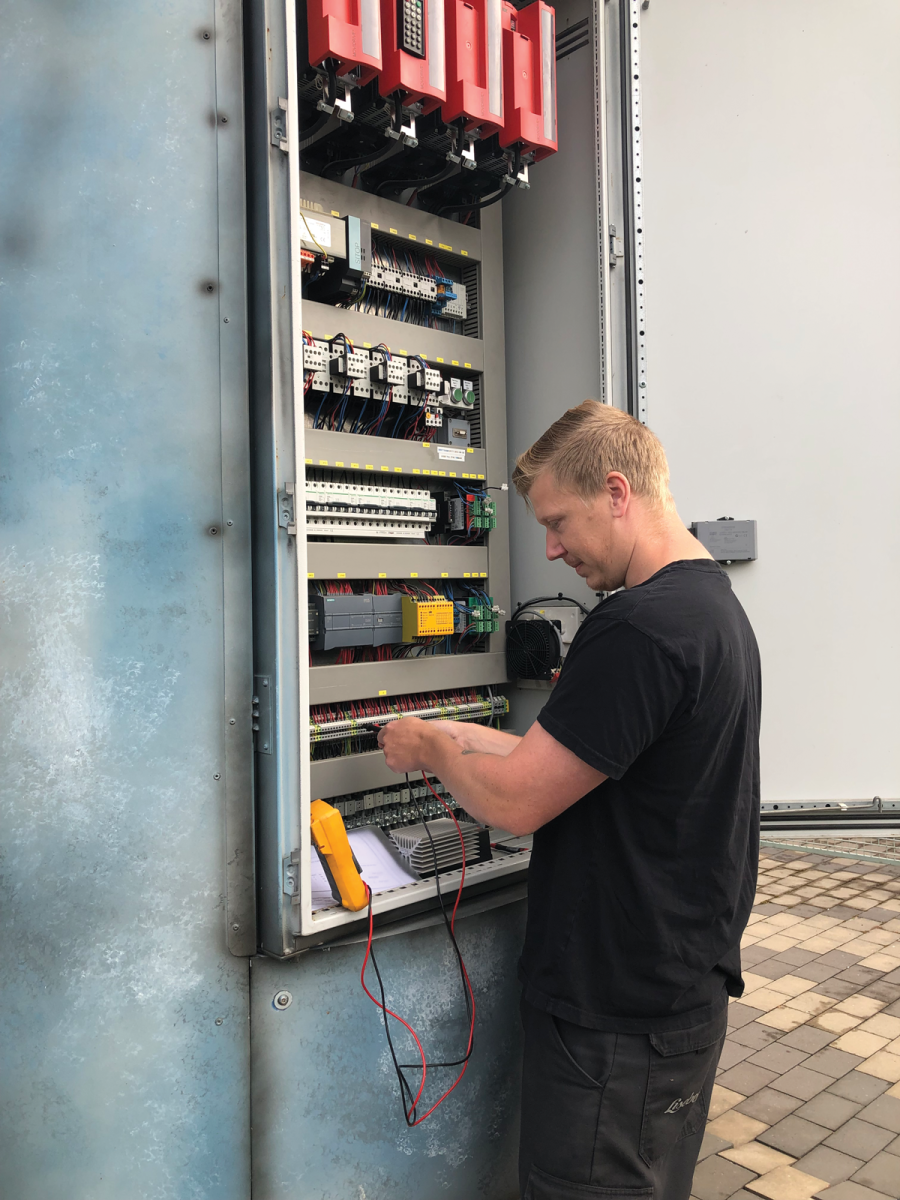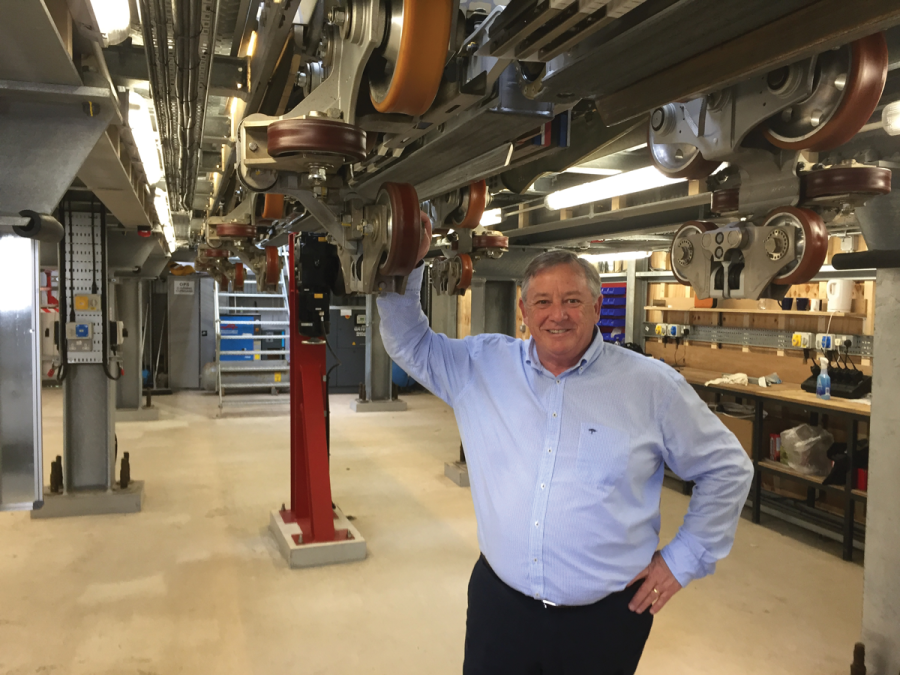Inside Out: EN 13814

The overhaul outlined across 228 pages are headlined by two letters and five numbers: EN 13814.
The series of three documents—titled EN 13814 by the European Committee for Standardization (Comité Européen de Normalisation in French and abbreviated as CEN)—is a publication of accepted safety rules pertaining to ride design, manufacturing, operation, and inspection across Europe. The newly expanded standards apply to both manufacturers and suppliers, as well as owners and operators.
“The document represents state-of-the-art standards for the safety of amusement rides and devices,” says Roman Hauer, head of ride safety with Mack Rides. “EN 13814 harmonizes rules in the huge worldwide market for designers and manufacturers.”
Like ASTM F24 amusement ride safety standards in the United States (and adopted by many other countries), along with ISO 17824-1-2015, a set of standards used globally, EN 13814 in Europe is rooted in safe manufacturing and subsequent maintenance practices, according to David Bromilow, global director of parks and attractions at the Mobaro Park group, who supported the EN 13814 technical teams.
“Our industry has always worked on the principle of safety first; therefore, hazard and risk are always taken into account, no matter if you are working in ride operations, technical services, catering, or retail. Safety is always at the forefront for any park team,” Bromilow says.
The updated version of EN 13814 expands the prior standards—that were outlined in just one document previously—into three new parts:
- EN 13814-1: Part 1—Design and Manufacture
- EN 13814-2: Part 2—Operation, Maintenance, and Use
- EN 13814-3: Part 3—Requirements for Inspection
“The target groups are now differentiated,” explains Kees Bakker, senior ride safety expert at TÜV Nederland. “The ease of use with the new standards assists manufacturers and engineers, along with the certification body, which inspects designs and equipment.”

Design and Manufacture
Part 1 dictates everything from which materials should be used when fabricating a new attraction to the load-bearing capacity of a new ride. The document can serve as a textbook of sorts, with mathematical equations, provisions for corrosion, and a glossary of industry terms.
Ready to build a flume ride? EN 13814-1 spells out everything from the minimum distance of boats to channel walls located in the boarding station and what kind of passenger restraints inside log flume boats should be used—or avoided.
Designing new dodgem cars? EN 13814-1 lists seatbelt sizes, vehicle speeds, and the materials surrounding bumpers should be made from.
Looking to create a new circular ride? EN 13814-1 provides what loads and forces are acceptable on a vertical axis with more than one degree of freedom, along with provisions for the fencing and barriers around the ride.
The guidelines also list what faculties a child should have beginning at age 2 in order to experience a ride.
During the development process, writers harmonized the new EN 13814-1 as best as possible with the ASTM F24 standards, according to Har Kupers, CEO of Vekoma Rides Manufacturing B.V.
For example, guidelines on accelerations (known as “G-forces”) are fully harmonized between the standards and EN 13814 refers directly to an ASTM standard (F2137) for measuring G-forces on rides.
Operation, Maintenance, and Use
Part 2 of the expanded EN 13814-2 document is designed for owners and operators. The document spanning 38 pages includes a checklist for operators to use at the start of the season and again on a daily basis.
Plans include standards to follow in case of emergency, duties of ride attendants, and when to schedule maintenance. The document also calls for precise daily record keeping, along with operational and use risk assessments (OURA).
“OURA has been a part of our industry as long as I can remember. The main difference today is that you are required to document it, including the process, the results, and your action plans,” explains Bromilow.
Gothenburg, Sweden, have already taken the necessary steps to be in compliance with the OURA standards outlined in EN 13814.
“The controller of an amusement device is now responsible for documenting and performing an OURA,” says Kenneth Berndtsson, head of technical and safety operations at Liseberg. “Assessing risks has always been fundamental to our industry, but now we also have it clearly written into the standard.”
Part 2 of EN 13814-2 details the OURA plan operators, controllers, and owners need to follow, including documenting “all of the considered risks inherent during all modes of an amusement device operation and the means taken to mitigate against them.” That includes maintaining, keeping, and updating as required by a ride’s operating manual and amusement device log, as well as creating necessary reports.
Requirements for Inspection
The third section of EN 13814-3 focuses on guidelines to use during the inspection of rides, in accordance with ISO/IEC 17020. Clearance distances, running of moving parts, load-carrying constructional components, compliance with weight calculations, and the strength, durability, and fire resistance of parts, along with conformity for the electrical, electronic, hydraulic/pneumatic equipment and wiring are all included.
“Compared to the 2014 version, a lot of requirements are clearer and sometimes more stringent. Also, items not addressed in the old standards now are included,” says Bakker. “It regulates and harmonizes all requirements during the lifetime of a ride.”
However, at no time should anyone doubt the competency of the older document.
“The rides designed—and approved—to the existing standards are still very safe,” says Kupers. “The updated standard sets the next level for state of the art rides. If we feel the need to upgrade an existing ride to the new standard, we will of course inform the owners/operators of these rides.”
Compiled by Experts
The three updated sections of EN 13814 are the result of several years of work by manufacturers, parks, inspection bodies, regulatory authorities and IAAPA’s own safety committees says Gianni Chiari of Technical Services based in Italy.
“We divided each in different working groups for each part of the new EN 13814. This benefits the industry by using past experience and guaranteeing the consistency between the old and new edition of European standard,” Chiari explains.
“All designers, manufacturers, owners, operators, and inspectors are encouraged to review the new standards and incorporate the new rules in a timely and efficient manner,” Hauer says, adding CEN provides a transition period of three years (by May 2022) to apply the new EN 13814 series in order to assure a smooth change from the old to the new standard.
CEN—recognized as a European standards body by the European Union—was founded in 1961 and consists of 34 member nations, working together to develop European standards across various markets in Europe.
Read EN 13814 for Yourself
Copies of all three parts of the revised standards can be purchased in different languages from CEN: The European Committee for Standardization. Use the purchase links found here.
